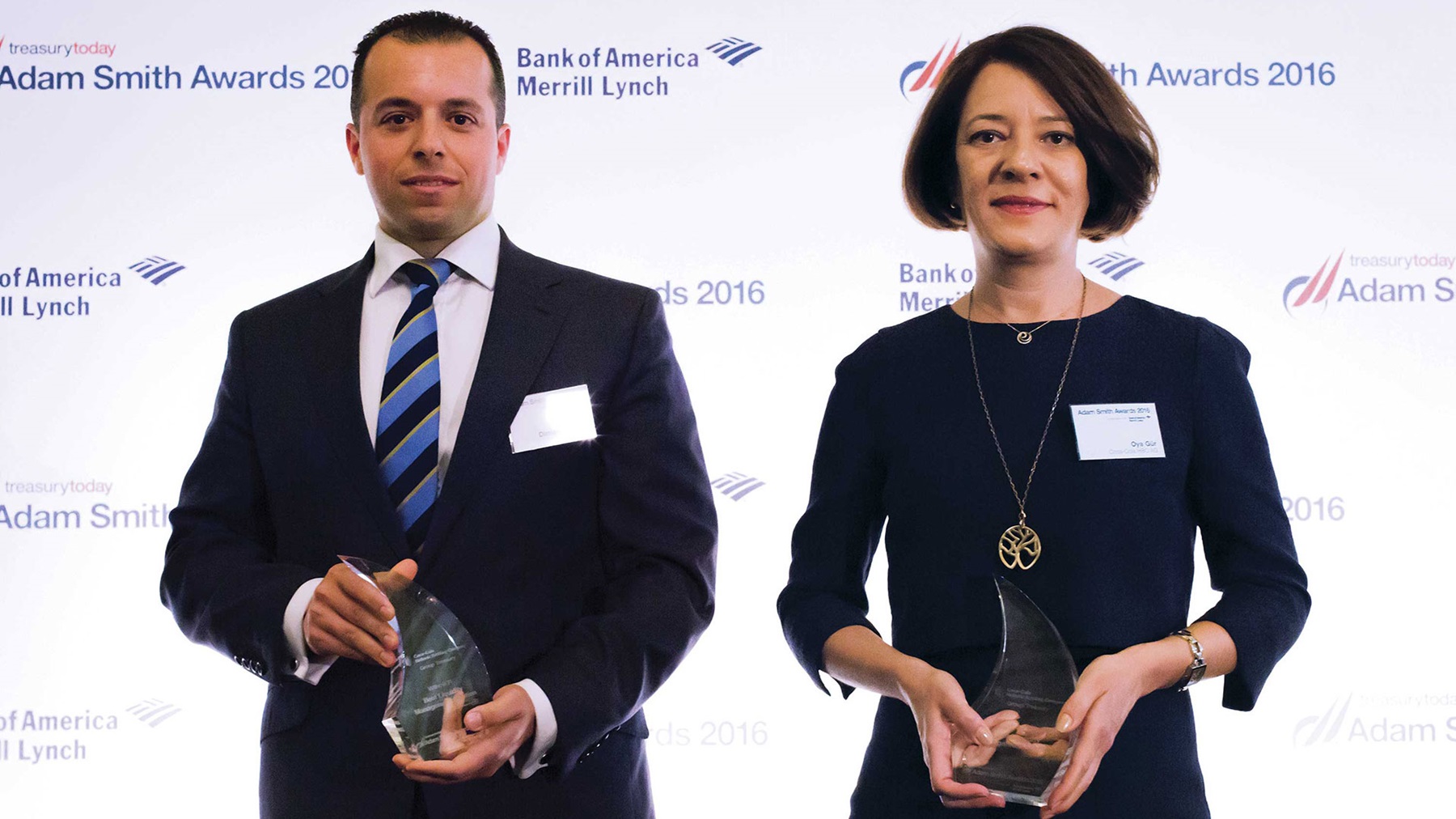
Photo of Dimitrios Raptis, Citi and Oya Gür, Coca-Cola HBC AG.
This solution addresses the stress in the money market fund arena and the emergence of negative interest rates for euro balances which solved the company’s €100m investment challenge.
Group Treasury Team

Coca-Cola Hellenic Bottling Company (Coca-Cola HBC) is one of the largest bottlers and vendors of The Coca-Cola Company’s products in the world, serving 589m people in 28 countries across Western Europe, Central and Eastern Europe and Africa.
The challenge
Until 2014, Coca-Cola HBC invested its surplus liquidity mainly in money market funds (MMFs) with the investment objective of preserving the value of its principal and ensuring access to liquidity. However, stress in the MMF market and the emergence of negative interest rates for EUR balances effectively eliminated MMFs as an investment tool for Coca-Cola HBC. It sought alternative investment options for surplus liquidity.
Magdalini Kimpezi, Treasury Finance Manager at Coca-Cola HBC, explains: “Notice accounts and longer-term time deposits do not have the flexibility the company required and MMF prevailing rates declined significantly below zero.”
In the second quarter of 2015 the need for an alternative solution became of even greater importance, due to Coca-Cola HBC accumulating liquidity in advance of an impending bond maturity and recognising that it needed a specific investment solution for over €100m.
The solution
To find a solution, the company entered into discussions with its top tier banks looking for a guaranteed return of principal, access to liquidity at short notice and a positive yield. Citi were able to propose an effective and sustainable solution.
In short, the solution works by automatically pooling Coca-Cola HBC’s EUR liquidity in a multi-currency pool and then notionally investing the balance in a USD high-yield deposit account that tracks longer-term market indices. The investment account that sits outside the pool is funded or de-funded daily to ensure that it reflects the EUR balance after any FX fluctuation.
This offers daily liquidity up to 20% of the total invested amount and a positive return for the EUR balances. Crucially, it did not create FX risk for Coca-Cola HBC and as the structure is fully automated, there is no need for manual placements or exposure to operational risk.
As it was a new investment option for Coca-Cola HBC, it required accounting review and internal approvals before it could be used as part of its investment policy. Coca-Cola HBC and Citi worked together on this process, with the bank providing a description of the components of the solution. Together they also explored different scenarios and outcomes in terms of FX or interest rate volatility.
Best practice and innovation
The product implemented is both unique and innovative. A small number of large corporates have sought to take advantage of the interest differential between EUR and USD rates in the past but this is the first time that this idea has been integrated into a single, automated end-to-end solution that maintains virtually unlimited flexibility and delivers substantial value.
Moreover, Coca-Cola HBC further benefited from the solution because interest rates divergence driven by Central Bank actions generated a favourable environment for Coca-Cola HBC to earn a net positive average weighted return of eight basis points or 0.08% in spite of prevailing market rates at -0.28%.
The sophisticated solution solves a significant problem for corporates in an era of unprecedentedly low or negative interest rates without compromising their liquidity or risk profile. In circumstances where companies are unable to commit balances for a set period of time (to a deposit) there are no positive yielding investment products available that offer principal protection (a requirement that is common in corporate investment policies). This solution overcomes these challenges to meet all of Coca-Cola HBC’s investment objectives.
“We have a very conservative approach when it comes to investments and were not keen to undertake any risk investing in complex products,” says Kimpezi. “The strategic approach was to identify the key components and connect them in order to harvest the benefits of each, without taking any of the operational risks that a manual process would entail. The automation of the solution that Citi offered reduced our reliance on forecasting and ensured we optimised our liquidity.”
Key benefits
- Principle amount not subject to FX risk.
- Positive accounting treatment satisfied.
- Positive average weighted return of eight basis points in spite of prevailing negative market rates.